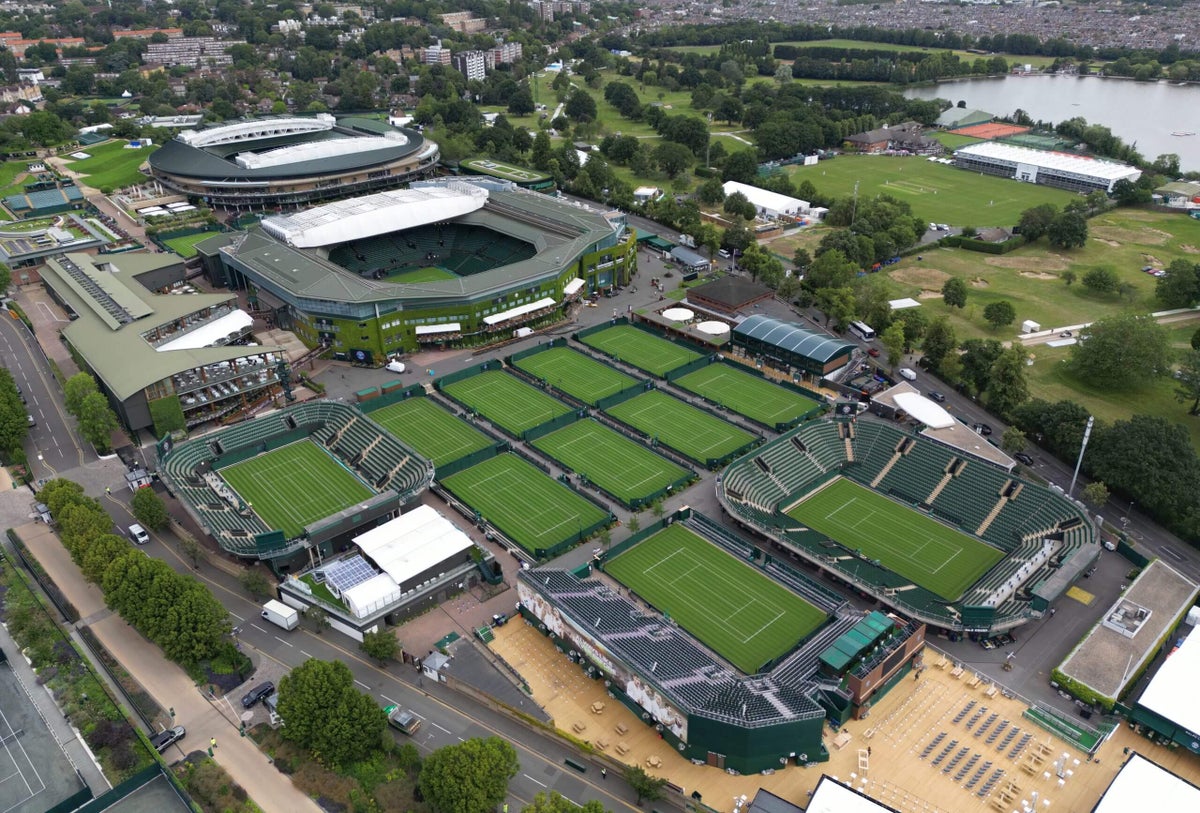CITY HALL, LONDON — The All England Lawn Tennis Club (AELTC) has been granted planning permission to add 39 new courts and triple the size of the grounds at the Wimbledon Championships.
At a public hearing on Friday afternoon, deputy London mayor Jules Pipe concurred with the recommendation of officers at the General London Assembly (GLA), who in a 221-page report last week found “no material considerations that are considered to justify the refusal of consent.”
As Pipe read the verdict, boos and cries of “shame on you” rang out from campaigners present for the hearing who said they would continue to fight against Friday’s decision. The objectors positioned themselves outside City Hall on Friday morning, holding placards outside the building with slogans like, “Green not greed!” Around 80 of the close to 140 in the public gallery were said to have been people opposing the plans.
Opponents, including Wimbledon MP Paul Kohler (a Liberal Democrat), and Fleur Anderson (Labour MP for Putney, Roehampton, and Southfields) can make two further legal challenges — a judicial review in the High Court, and then an appeal to the Supreme Court. Labour deputy leader Angela Rayner, who is also the Secretary of State for Housing, Communities and Local Government, had the power to overrule Pipe, but she wrote to the Wimbledon Society before the verdict confirming that she would accept the deputy mayor’s decision. Mayor of London Sadiq Khan excused himself from the process three years ago, having previously expressed support for the proposals.
Protestors outside London’s City Hall for the Wimbledon expansion hearing. (Charlie Eccleshare/The Athletic)
During the hearing, Anderson said that passing the AELTC’s plans would “set a dangerous London-wide and national precedent for development on the green belt.” Although the AELTC has owned the Wimbledon Park freehold — including the golf course — since 1993, its purchase of the land from Merton Council included a covenant that it would not develop the land “other than for leisure or recreational purposes or as an open space.” Residents groups, including the Wimbledon Society, believe that the proposals violate that covenant. In 2018, the AELTC also purchased the Wimbledon Park golf club, whose lease was to expire in 2041, for £65million (now $87.1m). This led to each member receiving £85,000.
Anderson added that only 28 per cent of the new area would actually be open to the public if the plans went ahead. “Local people are the losers in the deal,” she told reporters.

GO DEEPER
Protests, petitions and TV stars’ £65m golf club sale: Inside Wimbledon expansion row
Pipe’s decision is the most significant moment yet in what has been a fractious battle between the AELTC and local groups. The AELTC believes the plans will ensure that Wimbledon does not fall behind the Australian, French, and U.S. Opens in terms of prestige. One of the 39 new courts will be an 8,000-seater stadium, and the other 38 will allow the AELTC to bring the qualifying event on-site. That event is held the week before the main tournament starts, and Wimbledon is the only Grand Slam of the four not to already have its qualifying event on-site. Wimbledon’s current third show court, No. 2 Court, is the smallest of the third courts across the majors.
Objectors said that Wimbledon’s prestige is sufficient that it does not require new infrastructure to keep up.
The GLA report also presented the economic benefits of the plans, stating that they “would result in the creation of 40 year-round jobs and 256 Championships jobs.” At Friday’s hearing, AELTC chair Deborah Jevans said that under the expansion, the Championships would contribute £336m to the UK economy each year, and £326m to London’s economy. It is already London’s most valuable sporting event, adding £200m to the city’s economy in 2023, according to research from Sheffield Hallam University reported in the Evening Standard.
Jevans and AELTC chief executive Sally Bolton told reporters afterwards that early 2030s is the rough aim for when the courts will be ready for Wimbledon action.

Ticket sales and on-site purchases are not the limits of Wimbledon’s economic impact. (Henry Nicholls / AFP via Getty Images)
The principal arguments at the hearing were ecological and social, with net tree loss and major impacts on biodiversity cited as some of the major damage that the development would do. AELTC experts in this field present on Friday rejected this characterization, pointing to the intended planting of five times more trees than are set to be planning to removed if plans are approved. They also said that the area would perform better ecologically thanks to projects like planting pockets of wet woodland.
A recurring theme from the objectors was a perceived lack of compromise, and a feeling that local residents had not been consulted, more so than complete dismissal of the idea of expansion.
This is not a universal view, however, and Shan Warnock-Smith KC, a local resident in support of the development praised the AELTC for its “ample consultation” with the community. David Mooney, London Wildlife Trust chief executive officer, spoke of the plans having “ecological enhancement” and said that “the golf club is ecologically pretty dead.” It was later pointed out that the Trust were relying on AELTC data that had not been independently corroborated.
Sim Comfort, a local resident, said that The Wimbledon Park Heritage Group had changed its mind and were in support of the AELTC’s plans.
City Hall’s decision will not mean the end of appeals, but it is a decisive step in the AELTC’s plans for the future of Wimbledon.
(Top photo: Michael Regan / Getty Images)

